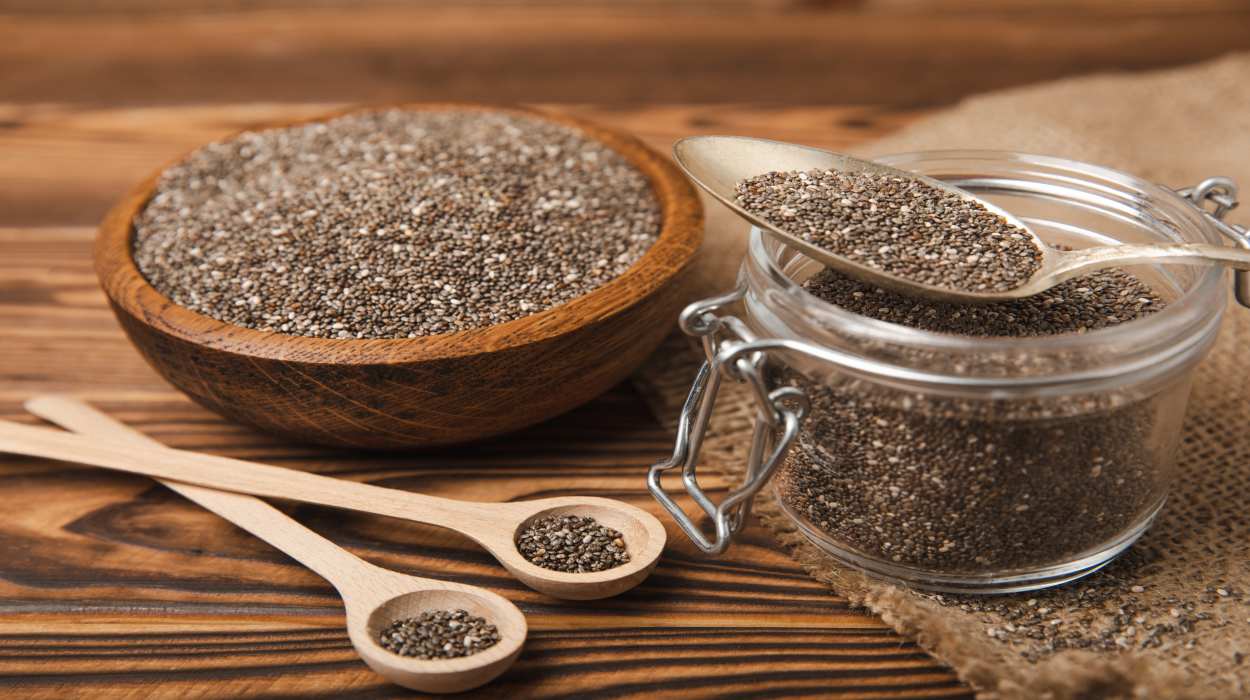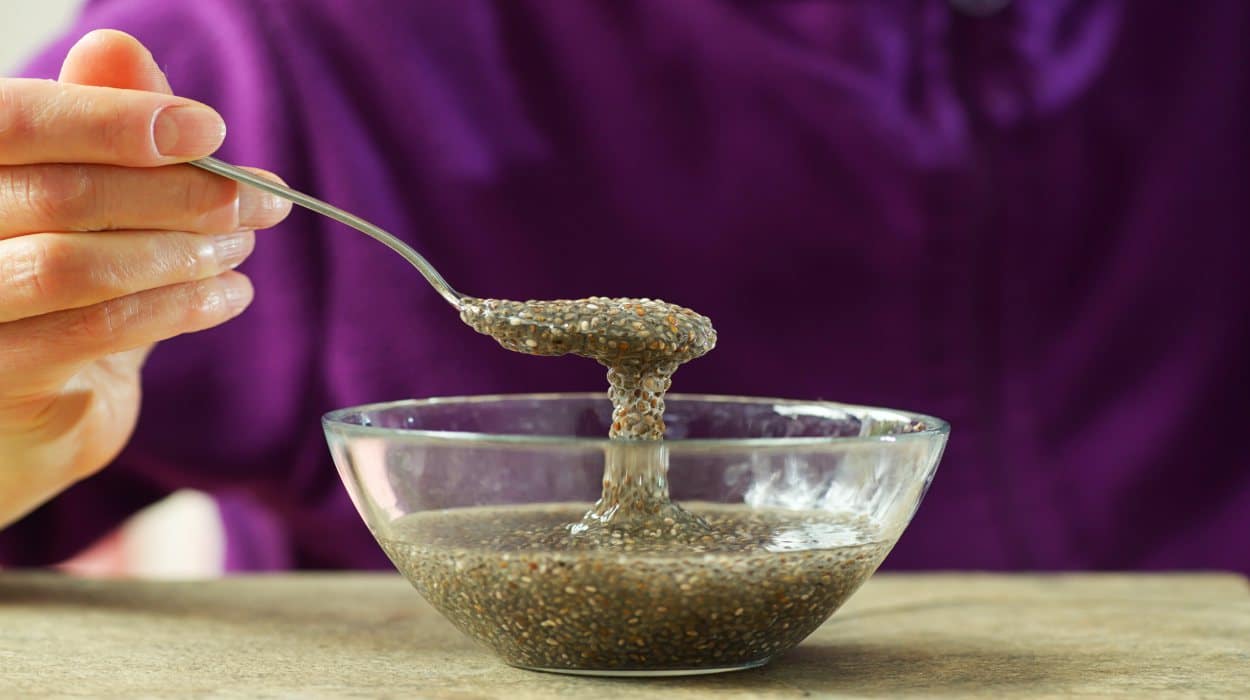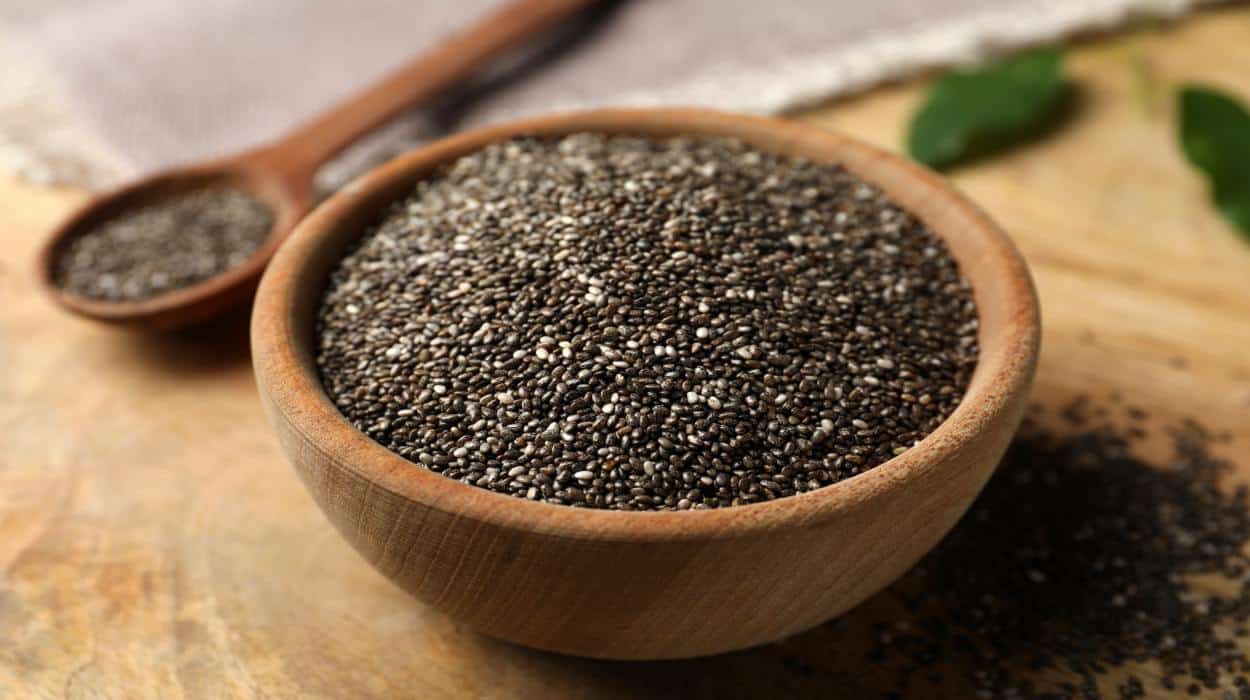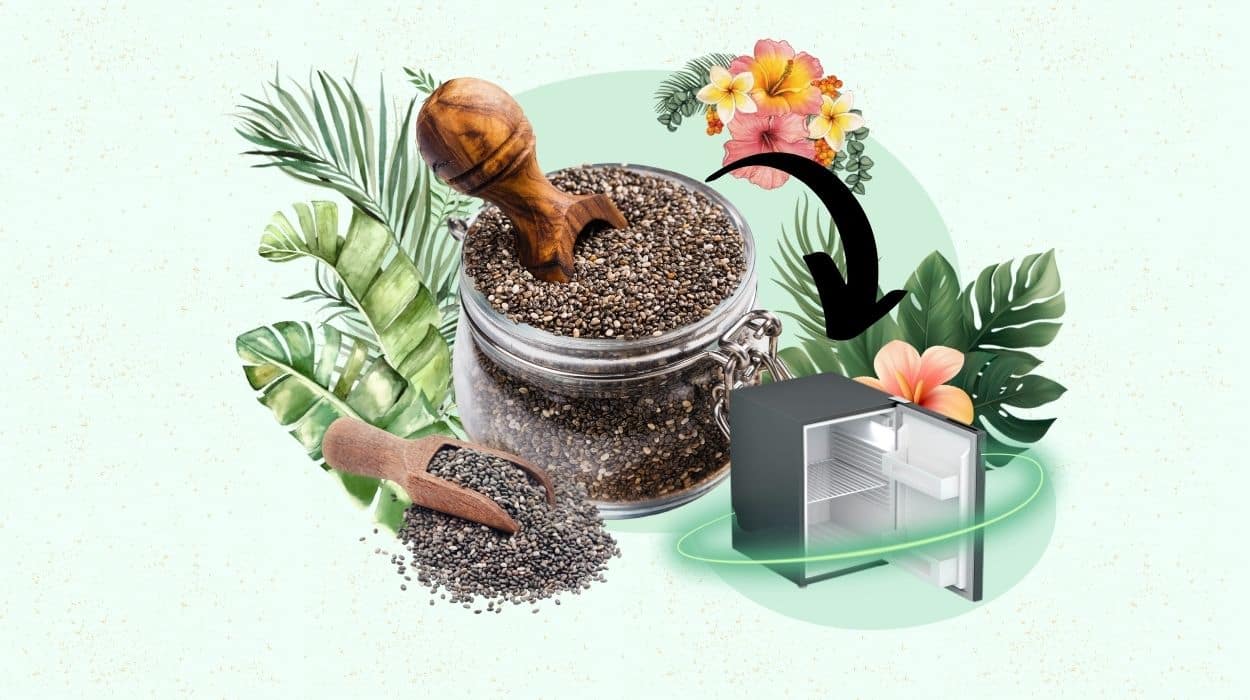Indicators, you can ensure the quality and safety of your chia seeds and avoid consuming spoiled or compromised food. Regularly checking for signs of spoilage and following proper storage practices will allow you to enjoy the health benefits and versatility of chia seeds for an extended period.
Remember, chia seeds are a nutritious and valuable addition to your healthy pantry, providing omega-3 fatty acids, fiber, protein, and various essential minerals. By taking care of their storage and monitoring their condition, you can make the most out of these tiny seeds and incorporate them into your diet for their numerous health benefits. Since they are so nutrient-dense, chia seeds have numerous health benefits. Check out this article on chia seeds for weight loss.
Do Chia Seeds Go Bad?
Chia seeds last for 4 to 5 years without refrigeration. Discover indicators to ensure the quality and safety of your chia seeds. Learn how to identify signs of spoilage and follow proper storage practices for fresh and safe consumption. Maintain the longevity of your chia seeds and enjoy their health benefits by regularly checking for smells, discoloration, unpleasant taste, and texture changes.
How Long Do Chia Seeds Last?

Known for their numerous health benefits and versatile culinary uses, can be stored in the pantry for an extended period. When properly stored, chia seeds have an impressive shelf life of up to two years. These tiny seeds are resilient and have natural properties that contribute to their long-lasting quality. You’ll also want to read about other food that is good for losing weight!
In The Pantry
When stored properly in a pantry, can maintain their quality for up to two years. Storing chia seeds properly is vital to avoid consuming expired chia seeds. It is essential to keep them in an airtight container away from heat, light, and moisture. Exposure to these elements can shorten their shelf life and affect their nutritional value. The pantry’s cool and dry environment helps to prevent the seeds from becoming rancid or losing their freshness. Regularly check for any signs of spoilage, such as an off smell or taste, before consuming chia seeds that have been stored for an extended period. By following proper storage practices, chia seeds can remain a reliable pantry staple for up to two years.
In The Fridge
While chia seeds have an impressive shelf life[1] in the pantry, refrigerating them can further extend their freshness. When stored properly in an airtight container, chia seeds can last up to four years in the refrigerator. The cool temperature helps to slow down the oxidation process and prevent the seeds from going rancid. Additionally, refrigeration also helps to maintain the seeds’ nutritional content and preserve their natural properties. Just ensure that the container is tightly sealed and protected from moisture to avoid any potential degradation. By refrigerating chia seeds, you can enjoy their health benefits and versatility for an extended period.
In The Freezer
Freezing chia seeds can significantly extend chia seeds’ shelf life beyond the usual storage methods. When stored in an airtight container or freezer bag, chia seeds can last up to five years in the freezer. The low temperature in the freezer helps to preserve their nutritional value and prevent any deterioration. However, it’s crucial to ensure the seeds are completely dry before you freeze chia seeds to avoid moisture absorption. When you’re ready to use the frozen chia seeds, allow them to thaw naturally at room temperature. Freezing chia seeds is an excellent option for long-term storage, ensuring that you don’t eat expired chia seeds.
What Affects How Long Chia Seeds Last?

Storage
Proper storage is crucial in determining how long chia seeds last. They should be stored in a cool, dry place away from direct sunlight and moisture. Exposure to heat, light, and humidity can accelerate deterioration and reduce their shelf life.
Packaging
The packaging of chia seeds plays a crucial role in determining their shelf life and overall freshness. Chia seeds should be stored in airtight containers or packaging to protect them from exposure to air, moisture, and light. Oxygen and moisture can lead to spoilage, rancidity, and a reduction in nutritional value. A tightly sealed package helps to preserve the seeds’ quality and prevent any external factors from causing degradation. High-quality packaging materials, such as opaque containers or foil-lined bags, can also provide additional protection from light and UV rays. By choosing appropriate packaging and ensuring airtight storage, you can extend the longevity of chia seeds and maintain their freshness.
Quality Of The Seeds
The quality of chia seeds significantly impacts their shelf life[2] and how long they last. Fresh, high-quality chia seeds tend to have a longer lifespan compared to seeds that are old or compromised. High-quality seeds are typically obtained from reliable sources and have been properly processed and stored. They have a higher nutrient content and are less prone to spoilage or rancidity. On the other hand, low-quality or stale chia seeds may already be past their prime, leading to a shorter shelf life. It is important to choose reputable suppliers and check for signs of freshness, such as a pleasant aroma and a clean appearance, when purchasing chia seeds to ensure their longevity.
Oxidation
Oxidation is a critical factor that affects the shelf life of chia seeds. Chia seeds contain natural oils[3] that are susceptible to oxidation over time. When exposed to air, these oils can degrade, leading to a reduction in quality, taste, and nutritional value. Oxidized chia seeds may develop an off-flavor and become rancid. Proper storage in airtight containers and minimizing exposure to air can help slow down the oxidation process and extend the longevity of chia seeds. It is essential to check for any signs of rancidity or off odors before consuming chia seeds that have been stored for a prolonged period to ensure their freshness and optimal benefits.
How To Know If Chia Seeds Have Gone Bad?

Several signs can indicate that chia seeds have gone bad or are no longer suitable for consumption. Here are some common indicators:
Off Smell
The smell of chia seeds can serve as a reliable indicator of their freshness and potential spoilage. Fresh chia seeds should have a mild, nutty aroma that is pleasant to the senses. However, if the chia seeds have gone bad, they may emit a strong, rancid, or off smell. This could be an indication of oxidation, mold growth, or the breakdown of their natural oils. If the smell is unpleasant or significantly different from the typical odor, it is best to discard the chia seeds to avoid consuming spoiled or compromised food. Trusting your sense of smell can help ensure the quality and safety of your chia seeds.
Discoloration
Discoloration is a visible sign that chia seeds may have gone bad and should not be consumed. Fresh chia seeds typically have a uniform dark color, ranging from black to dark brown. However, if you notice any changes in their appearance, such as patches of green, gray, or white discoloration, it is a clear indication of spoilage. Discoloration can be caused by mold growth or exposure to moisture, indicating that the chia seeds have deteriorated and are no longer suitable for use. It’s important to prioritize food safety and discard any chia seeds that show signs of discoloration to prevent potential health risks.
Unpleasant Taste
The taste of chia seeds can provide valuable insight into their freshness and potential spoilage. Normally, chia seeds have a mild, nutty flavor that is pleasant to the palate. However, if chia seeds have gone bad, they can develop an unpleasant taste. Rancid or spoiled chia seeds may have a bitter taste, sour, or off-putting flavor. Consuming chia seeds with an unpleasant taste can be an indicator of oxidation or the breakdown of their natural oils. It is crucial to trust your taste buds and avoid consuming chia seeds that have a noticeably different or unpleasant taste, as it may compromise their quality and safety.
Texture Changes
The texture of chia seeds can offer valuable clues about their freshness and potential spoilage. Normally, chia seeds have a dry, crunchy texture. However, if they have gone bad, their texture may change noticeably. Spoiled chia seeds can become slimy, sticky, or clumped together. The presence of moisture or mold growth can cause such changes in texture. If you observe a slimy or unusual consistency when handling chia seeds, it is best to discard them as they may have deteriorated and are no longer safe for consumption. Monitoring and recognizing any significant texture changes can help ensure that you consume fresh and safe chia seeds.
If you notice any of these signs, it is best not to eat chia seeds and err on the side of caution and dispose of the chia seeds. Consuming bad chia seeds may lead to gastrointestinal issues or foodborne illnesses.
Conclusion
In conclusion, chia seeds can be stored in the pantry for up to two years when stored properly. Their longevity is influenced by factors such as proper storage, quality of the seeds, oxidation, and packaging.
Ensuring a cool, dry environment, using airtight containers, and protecting them from light, heat, and moisture can help maintain their freshness. High-quality seeds obtained from reliable sources have a longer shelf life. Oxidation can degrade the seeds’ quality, taste, and nutritional value, emphasizing the need for airtight storage.
Recognizing signs of spoilage, such as off smells, discoloration, unpleasant taste, or texture changes, is crucial in determining if chia seeds have gone bad. By being mindful of these factors, you can enjoy the benefits of chia seeds while maintaining their freshness and safety. If you want to find out the possible side effects of consuming chia seeds, you’ll want to read this article.
Frequently Asked Questions
Pantry, Refrigerator, Freezer.
Check the smell, color, taste, and texture of chia seeds.
Spoiled chia seeds can become slimy, sticky, or clumped together.
 Expert's opinion
Expert's opinion
